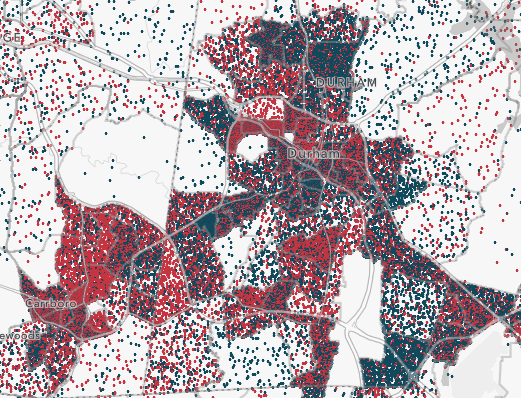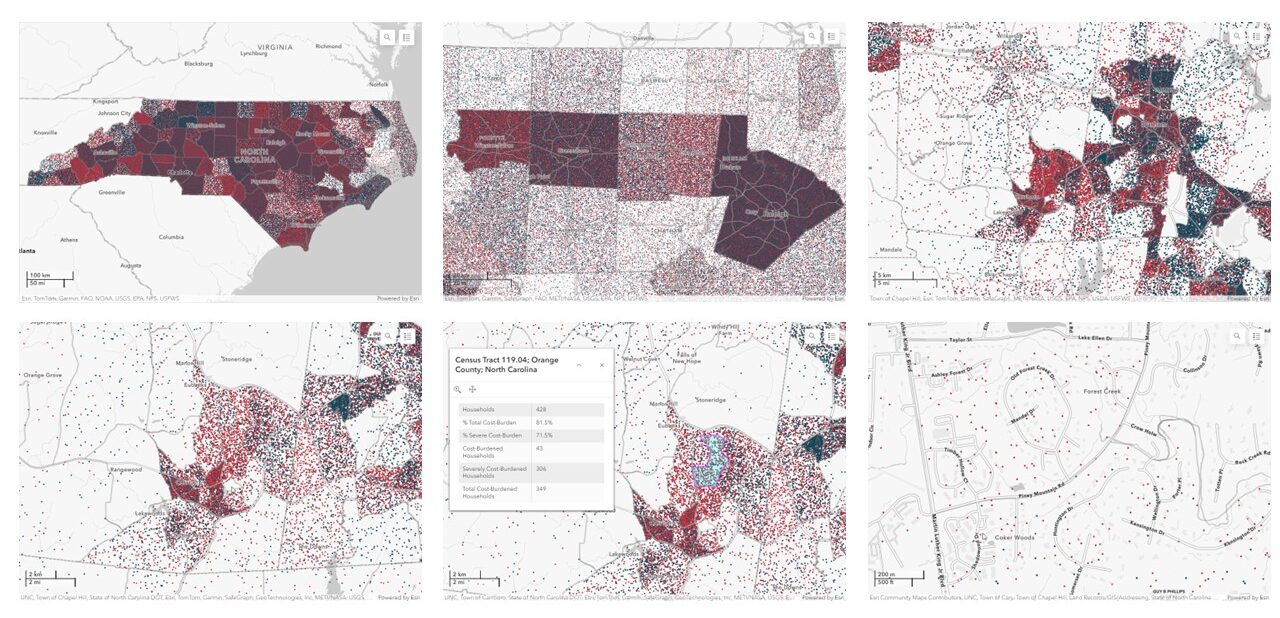Housing cost-burden refers to the amount of household income spent on housing costs – rent or mortgage, plus utilities. A household is considered to be cost-burdened if housing costs exceed 30% of the income; severe cost-burden refers to households that pay over 50% of their income on housing costs. While cost-burden is much more prevalent among lower-income households, by this definition, it can affect any household in the county.
In North Carolina, 44% of all renter households are cost-burdened, and almost half of those are severely cost-burdened.
The interactive map below shows the cost-burdened and severely cost-burdened renter households across North Carolina. Each dot represents one renter household among the estimated 630,034 cost-burdened households in North Carolina, including an estimated 299,001 severely cost-burdened households. A blue dot represents a household that spends 30%-49% of income on rent plus utilities, and a red dot represents a household that spends 50% or more of income on housing.
This dot density map randomly places the dots within the specified geographies, depending on the scale. Zoomed out, the dots are distributed to the county; as you zoom in and explore the map, the dots will be assigned to Census tracts and then block groups.
Data was obtained from the American Community Survey 2018-2022 and mapped used ArcGIS Online. An R script for the data pull is available here: github.com/davinhall-uncg/cost_burden
Interactive Cost-Burden Map
Areas that are more red have a higher rate of severely cost-burdened households than those that are more blue. Watauga County – home of Appalachian State – has 42.3% of renter homes being severely cost-burdened, compared to Buncombe County with 20.5%.

There are also stark differences in the percentages of cost-burdened households within city neighborhoods. In Durham, Census tracts range from 0% to 47.9% that are severely cost-burdened. And just across the border in Carrboro of Orange County, the rates of severely cost-burdened renter households in Census tracts reach as high as 71.5%.

The lack of affordable housing affects every county in North Carolina. Explore the map further to identify areas of disparity across the state. Clicking anywhere on the map will reveal cost burden statistics for the county, tract, or block group that you selected.
Sources:
United States Census Bureau. “B25070: Gross Rent as a Percentage of Household Income in the Past 12 Months.” 2018 – 2022 American Community Survey. U.S. Census Bureau’s American Community Survey Office, 2022. Web. 12 February 2024 <http://ftp2.census.gov/>.
